File Menu
Click "File" on the top to access the File menu.
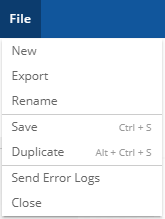
Figure: File Menu
It contains the following options.
- New: Click it to create a new Nodeflow. It starts a new session in a new browser tab and shows the first screen of Synthesizer. The Administrator can use this option to create multiple Nodeflows simultaneously.
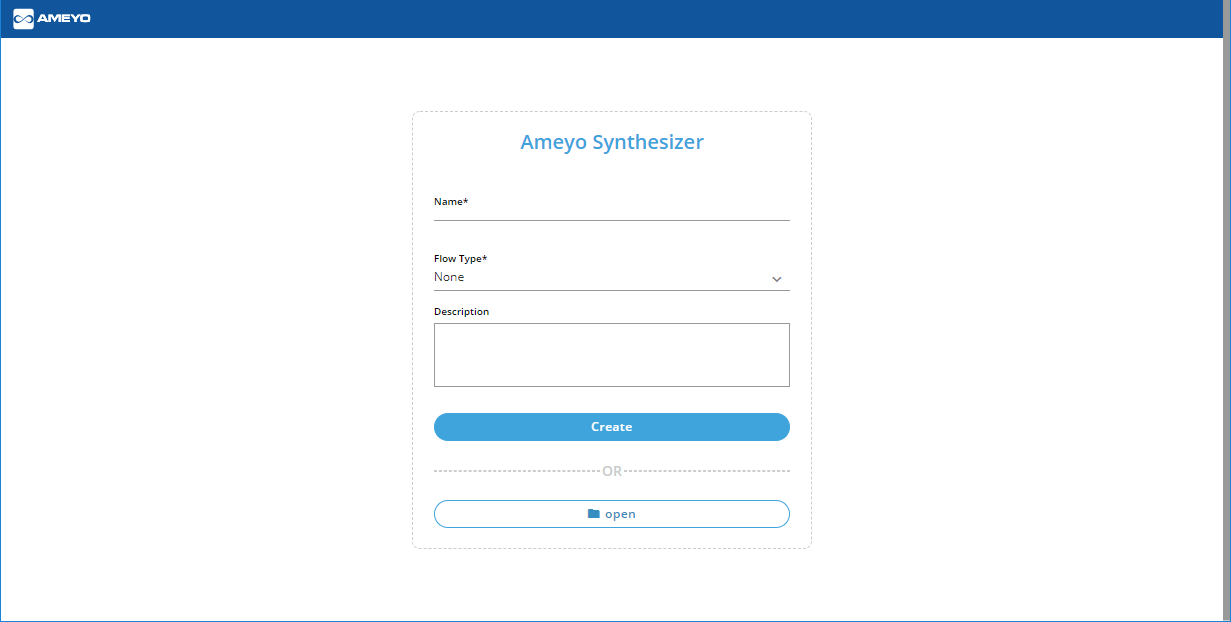
Figure: Synthesizer Page
- Export: Click "Export" to save the created Nodeflow to a ".anfx" file on the disk. If some nodes are unused, it shows the following warning message.

Figure: Error while exporting the nodeflow
If the error is displayed, then you can either fix the issue or click "Export Anyways" to continue exporting the nodeflow.
"Export" option is based upon "Save As" functionality of the Web browser. If "Ask where to save each file before downloading" option is not checked, the Nodeflow will be exported as ".anfx" file at the default download location of the Web browser, which will have the name provided while creating the Nodeflow. In this case, the Administrator does not get the option to change the name and path of the file.
It is recommended to keep "Ask where to save each file before downloading" or similar option checked in your Web Browser so that you can specify the name and path to save the files.
If "Ask where to save each file before downloading" or similar option is enabled in your Web Browser, then the following dialog box is displayed while exporting the Nodeflow.
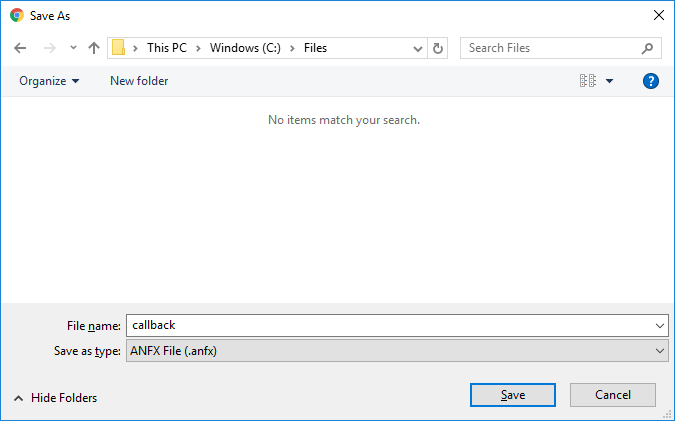
Figure: Export File
Whenever the changes are made in the nodeflow, Ameyo Synthesizer will write the nodeflow when the User saves it. However, the changes are not written to the exported files. Therefore, the User have to export the file each time after making the changes.
Select the location and provide a name for the file. Click "Save" to save the file on the disk.
Rename: Perform the following steps to rename a nodeflow.
Click "Rename" option. It shows the following modal.
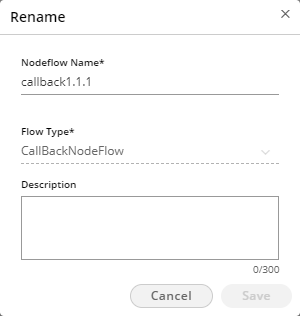
Figure: "Rename Nodeflow" Modal
Enter the new name of the nodeflow.
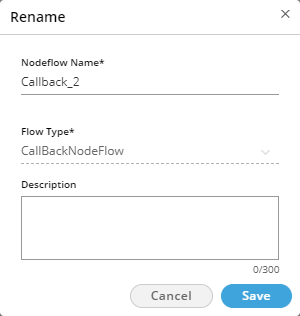
Figure: Renaming the Nodeflow
Click "Save" button. The selected nodeflow is renamed.
Save: After making the changes in nodeflow, it is recommended to save the nodeflow. Click "Save" option in the file menu. After saving the nodeflow, a small notification message "File is saved" is displayed in the top right corner.
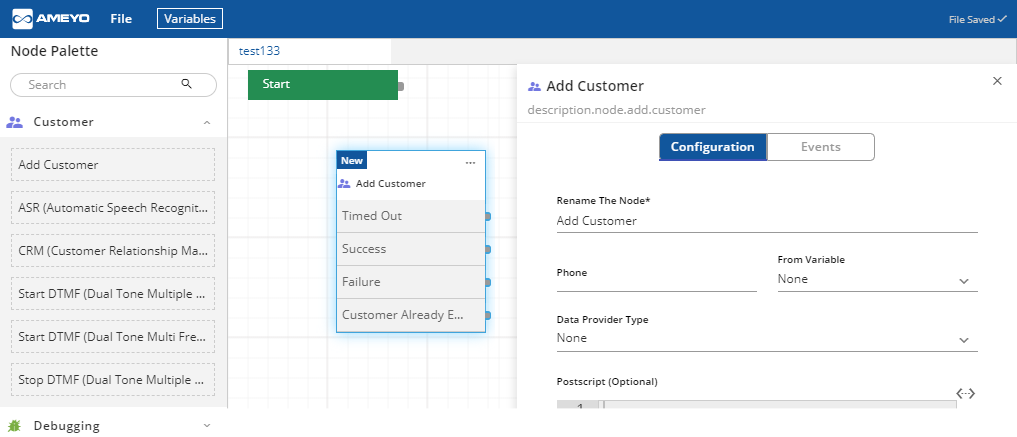
Figure: Nodeflow is saved.
Duplicate: Perform the following steps to create a duplicate copy of a nodeflow.
Click
 to access its menu.
to access its menu.Click "Duplicate" option. A copy of the nodeflow is created with the name <nodeflow_name.1> and the nodeflow is opened in a new tab of the same Browser Window.
If the user is creating the duplicate of an already duplicated nodeflow, then its name will be <nodeflow_name.1.1>. Another ".1" will be suffixed if another duplicate copy is created.
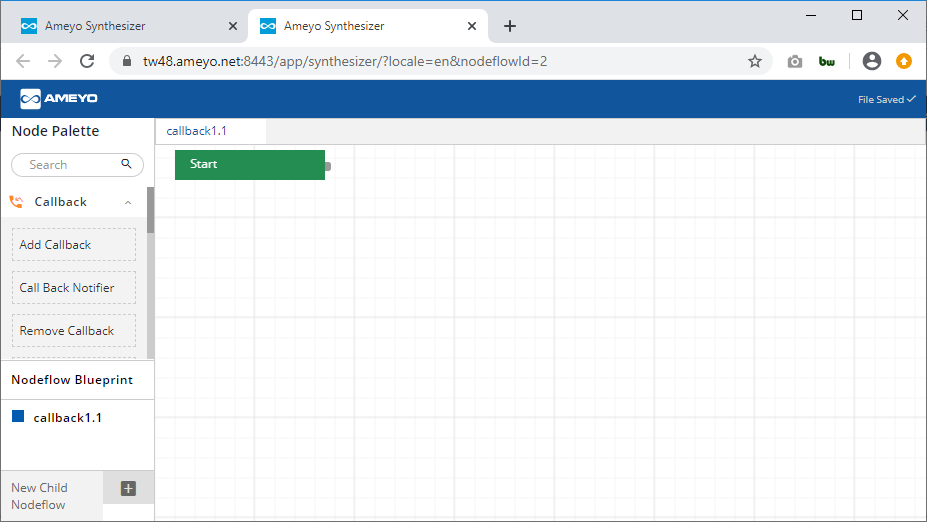
Figure: Duplicate Nodeflow in the new Tab
With the creation, the duplicate nodeflow is saved automatically and a message is displayed in the top right corner of the window.
Switch to the first page of Synthesizer, which shows the duplicate nodeflow.
- Send Error Logs: Click it to send the error logs to our Internal Team. It sends the logs related to the current Nodeflow only.
- Close: Click it to close the current instance of Ameyo Synthesizer. Other active session instances of Synthesizer opened in other Browser Windows or Browser Tabs will continue to function.
If the Nodeflow has not been exported earlier, the following pop-up is displayed.
Figure: Close Synthesizer
It contains the following options.- Cancel: Click it to cancel the closing of Synthesizer.
- Close without Exporting: Click it to not save the Nodeflow file and close Synthesizer.
- Export and Close: Click it to save the Nodeflow file and close Synthesizer. Synthesizer will be closed, and there is an option to save the Nodeflow as ".anfx" file.
Introduced the Error Palette
The User has to go through the different nodeflows while designing a nodeflow. Every page in Synthesizer can have an error because of invalid user actions or user inputs. If the User is getting the errors on multiple pages, there is no common list of errors displayed in Synthesizer. To help the User, Ameyo introduced the Error Palette in Synthesizer at the bottom of the page. It shows all errors and warnings in a single place.
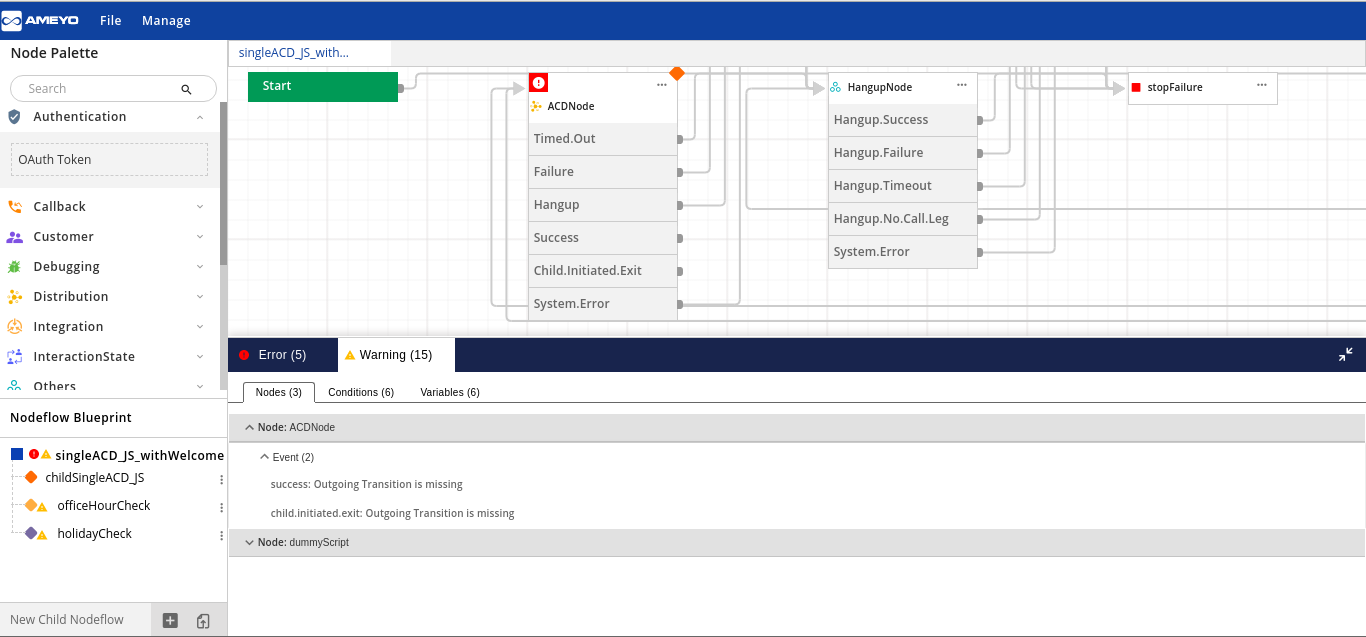
Figure: Error Palette
It contains the following tabs.
Errors: It contains the error messages. A red-colored circle denotes its icon. It contains the following sub-tabs.
Nodes: It lists the error messages being displayed in the Nodes.
Conditions: It lists the error messages being displayed in the Conditions.
Variables: It lists the error messages being displayed in the Variables.
If any element such as Node, Condition, or Variable does not have any error, then its tab will not be displayed.
Warnings: It contains the warnings. A yellow colored triangle denotes its icon. It contains the following sub-tabs.
Nodes: It lists the warnings being displayed in the Nodes.
Conditions: It lists the warnings being displayed in the Conditions.
Variables: It lists the warnings being displayed in the Variables.
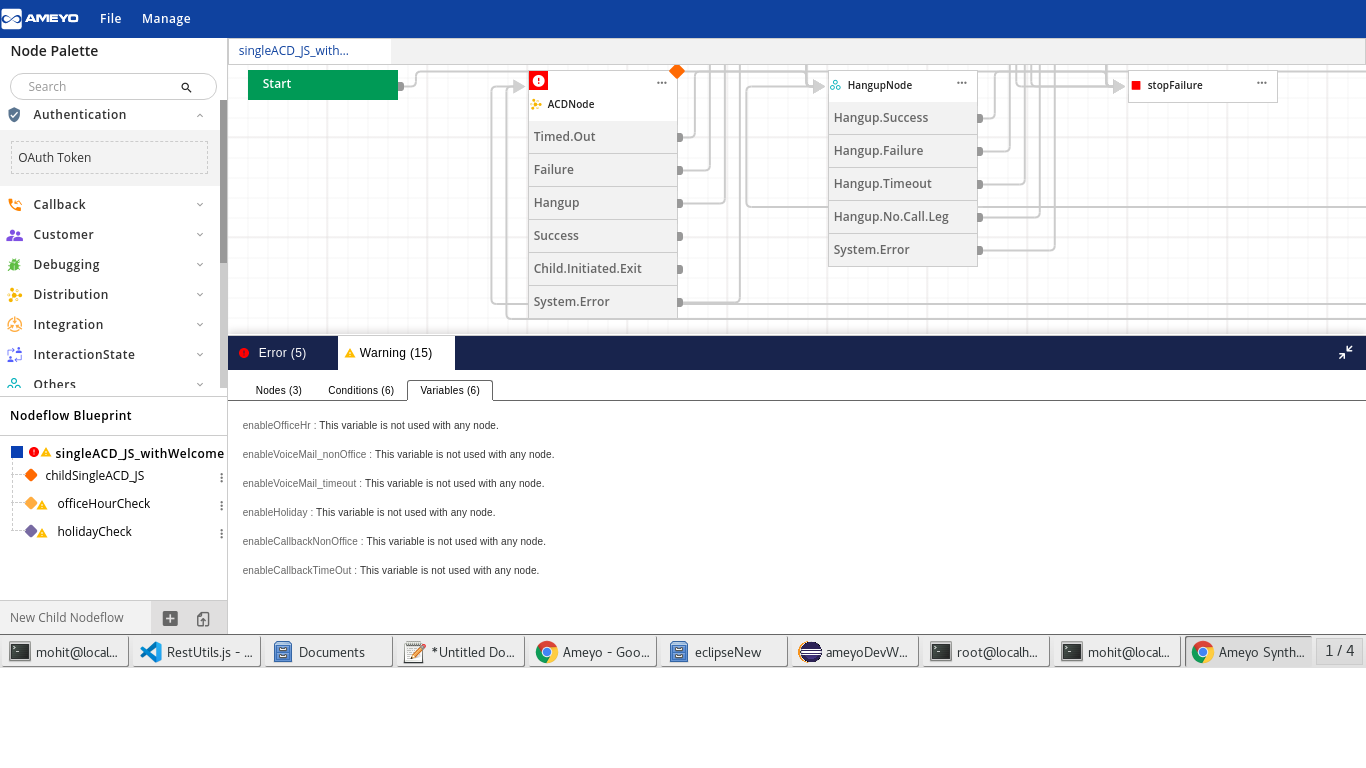
Figure: Warnings in Variables
If any element such as Node, Condition, or Variable does not have any warning, then its tab will not be displayed.
The User can go through these tabs to view the information about errors and warnings. The User can click any error message to visit the place where the error has occurred.
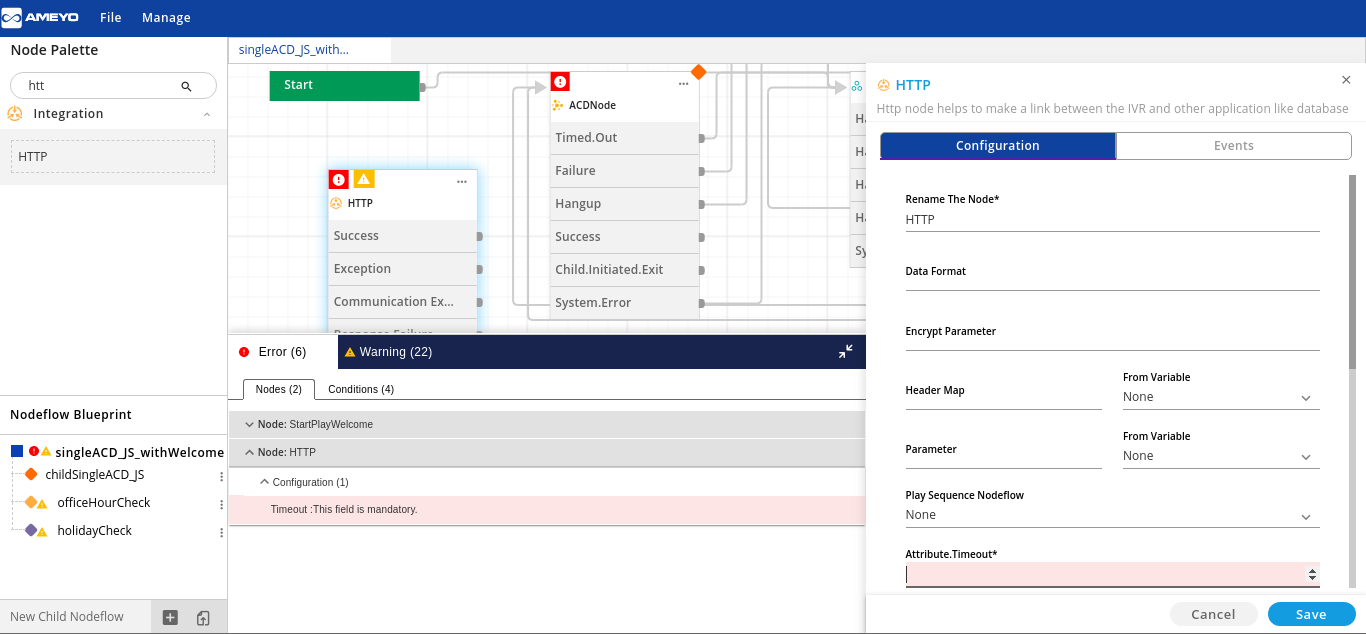
Figure: Redirect to the location from the Error Message